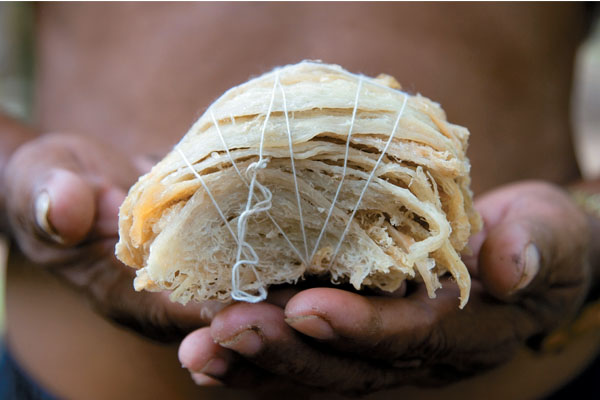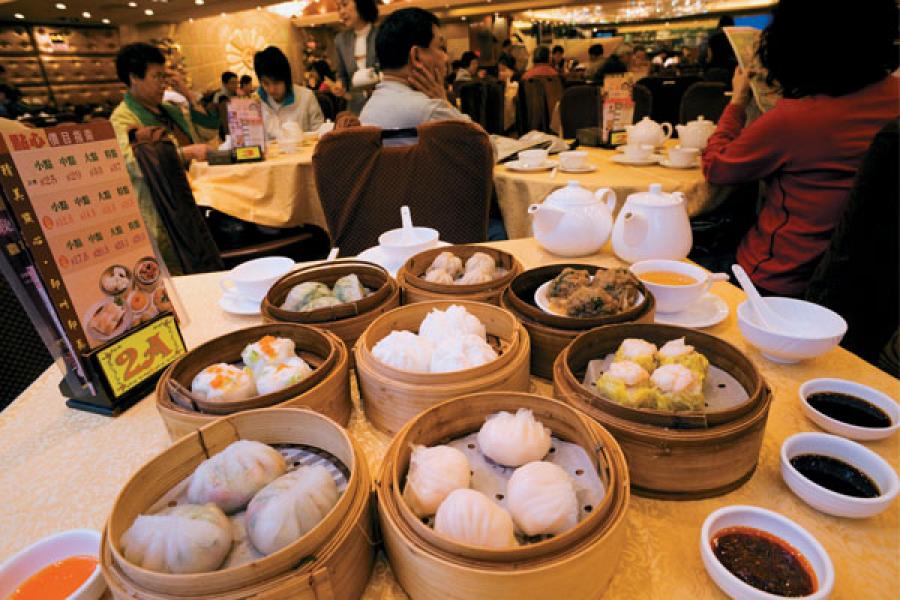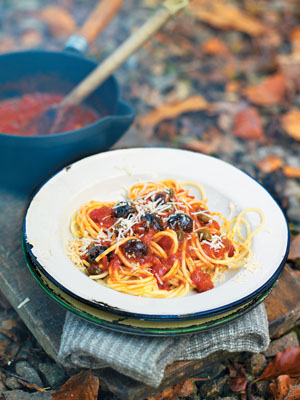
The Perks of Eating Local
Not exploring local food is a disservice to travel
What do you mean by you don’t want indian food?” my guide looked at me belligerently. His tone, his body language, his narrowed eyes reminded me, inadvertently, of my grandmother glowering at me as I tried to hide the untouched vegetables on my lunch plate under a pile of banana leaves from the fish paturi. “Everybody likes Indian food.
Most of all, Indians. All groups I have ever handled from India have wanted to have Indian food. In fact, they’ve often wanted only Indian food.” Which was all very well, but we were in Hong Kong. Cutting short his tirade, now bordering on hysteria, I explained that I really wanted to eat local. That I didn’t, somehow, think the breeze around Victoria Peak would make the tandoori chicken taste any better than what a dhaba served up along a Punjab highway. Different maybe, but better? Nah. It’s logic that the young man couldn’t quite fathom. Under his breath, he continued to mutter about how he had a shortlist of Indian restaurants that had always satisfied his Indian clients and how, anyway, his Indian guests had only wanted to eat Indian food.
As he grumbled, though, he was leading us to his local dim sum joint. We climbed up two narrow flights of stairs, squashing ourselves against the wall to make way for Chinese businessmen in a perpetual hurry, turned a corner, and found ourselves in a vast, busy room dotted with tables set close together. The thrum of conversation was misleading: All the focus was on the bamboo baskets that were making their way through the narrow aisles, placed on the table and relieved of their lids with a flourish. For a moment, the chatter would cease as eyes peered at the contents of the basket. Then the chopsticks would emerge, selected dumplings would be transported to the plate and then to the mouth. And conversation would resume.
Now, about a decade later, I no longer recall what I ate. I do remember, though, that we went back to the teahouse for breakfast the next day—where the crowning surprise was a savoury dim sum that looked exactly like a halved hard-boiled egg—and for dinner as well. For me, the intense huddles over the steamer baskets beat the knots of shoppers at the Temple Street night market; the steep climb to the teahouse was more memorable than the funicular up to Victoria Peak. The yeasty fragrance of cha siu bao lingered long after the Dior perfume sprayed at the mall had faded and it was the translucent rice-flour skin of the shrimp dim sum that I missed more than the Chinese silk in jewel tones.
So am I weird? Ten years ago, I thought so. My well-meaning colleagues looked blank when I held forth on the deep bowl soup, the Chinese new year specialty that had diners digging for the choicest bits of abalone and eel, and positively disgusted when I moaned about not being able to afford a swiftlet nest, one of the most prized (and controversial) regional delicacies. One friend countered that they preferred renting apartments with kitchenettes while travelling abroad, so that they wouldn’t have to risk their tummies; another said regretfully that she ended up eating more Gujarati food by way of theplas and ganthias when away from India as she was vegetarian.
Without discounting the real problems vegetarians face away from the mother country—a friend of that dispensation survived only on breads and fruit when posted for an extended period in Brazil—I do think that shutting oneself off from local foods is a great disservice to the notion of travel. It wouldn’t be an exaggeration to say that one of my greatest insights into the culture of food came at a dining table in England: Persuaded by a local friend to order the grilled fish at a well-regarded seafood restaurant, my Indian tongue received a shock at the dearth of spices, especially the zero heat factor. It took some unlearning, but over measured forkfuls and several meals, I began to appreciate the magic that could be wrought by the combination of fresh fish, a touch of butter and a squeeze of lemon—and also the desperation that had driven the spice trade and changed the course of history in our part of the world.
The point is this: Everywhere you go, if you look closely enough, there’s a bit of history, of culture, of experience to be consumed in a bite. Sample sushi in Japan: In its rice-coated exterior is contained the story of primitive preservation methods and the accidental birth of a new way of having sashimi, raw fish. Or the bunny chow, fast food synonymous with Durban: The story goes that Indian banias in the food business, unhappy at the thought of losing the custom of people on the wrong side of apartheid laws, began scooping out the middle of hunks of bread and filling it up with curry, to make for a quick, non-messy takeaway. Then there’s spaghetti alla puttanesca, usually translated as whore’s pasta (or slut’s spaghetti, as Nigella Lawson rechristens it with characteristic élan). One version claims that this simple dish—made up mostly of pantry ingredients such as anchovy, capers, olives, garlic, dried chilli flakes, canned tomatoes—was the throw-it-together dinner for the ladies after a hard night’s work. Another holds that some of these ladies, smarter than the others, placed a prepared plateful of the aromatic pasta on their window-sill to entice their customers. Soliciting made easy.

Edible Bird's Nest
Similar narratives abound in every corner of India as well. Unlikely as it may seem, the famed shondesh of Bengal is a Portuguese legacy: The foreign settlers bequeathed to the Bengalis the trick of curdling milk to make chhana, the soft, malleable foundation of the shondesh. At the other end of the country, nomadic tribes and sport-hunters refined the art of khad cooking, burying dressed meat—mostly game—in pits in the hot desert sand, surrounding it with hot coal and forgetting it till dinner time, by when it would have achieved a most incredible succulence and depth of flavour.
And why only at the table? Food markets, I find, are the most vibrant part of any destination, be it world capitals such as London or Istanbul or nondescript towns in Bihar or Andhra Pradesh. In these hubs of commerce, where everyone’s too busy making money to give the tourist a second glace, it’s possible to gauge how a place eats its food and lives its life. As much as the majestic museums or the great outdoors, they tell a story of a people. Are you listening now?
(This story appears in the March-April 2014 issue of ForbesLife India. To visit our Archives, click here.)
















